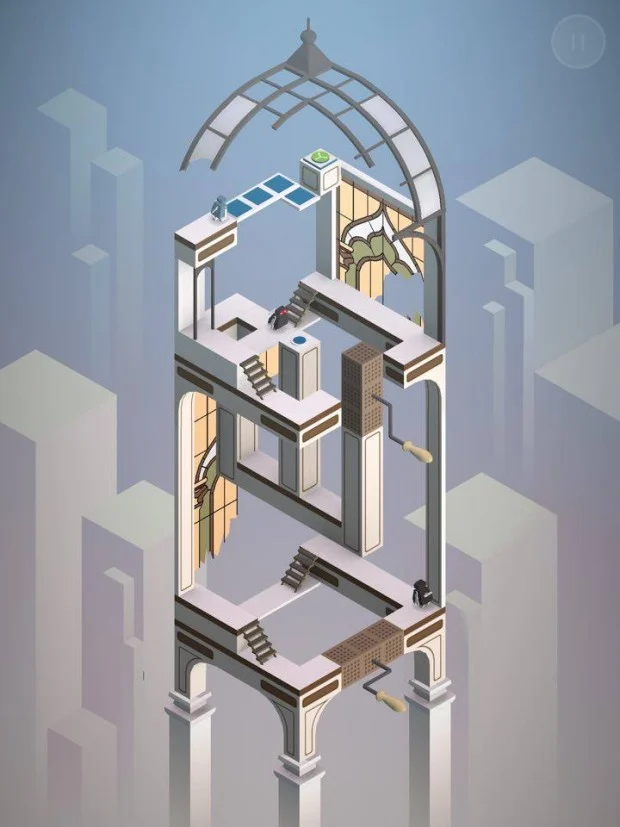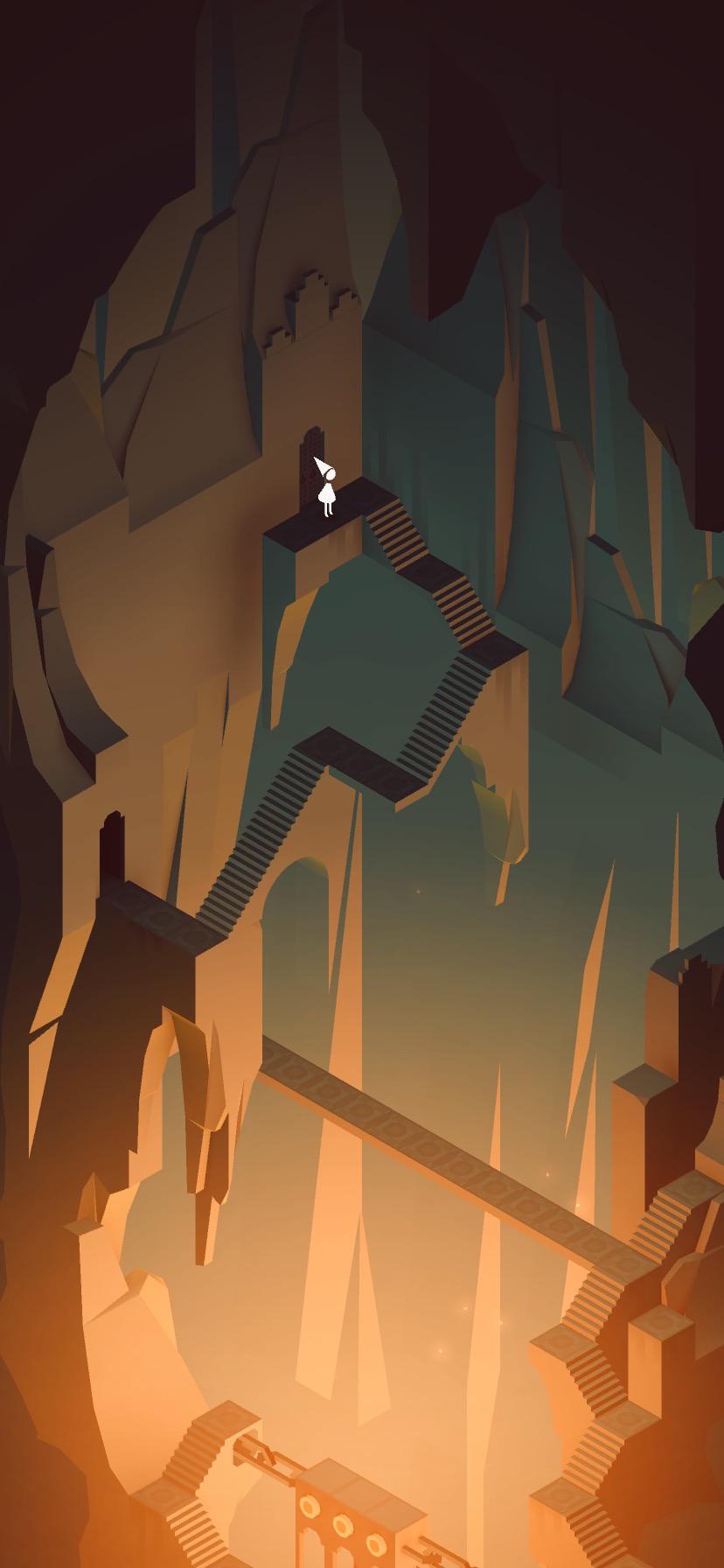Game: Monument Valley
Creator: Ustwo Games
Platforms: iOS, Android, Windows, macOS, PlayStation
The player controls Ida, the protagonist, and helps them move around the world by manipulating their environment to solve various puzzles, find hidden routes, uncover secrets and unlock new areas of the game’s map as she searches for her stolen treasures. Monument’s visual design is mostly based on surrealism, with out of this world architecture that plays on optical illusions. Ida remains silent throughout the game, and doesn’t even use a dialogue box to interact with the either the player or their environment. This, plus the slow and soothing ambient music that plays in the background promote a deliberating mood, and pushes the player to organically come up with their own game strategy and narrative, and interpret the game however they choose. It also creates a feeling of being in a trance, which I noticed while playing. The ambience of the game was very immersive, and my focus was fully locked in throughout the game.

The main form of puzzles are mazes and optical illusions, both of which do a great job of promoting exploration, discovery and the overall narrative of the game. The puzzles are more of brain teasers. They appear simple, and the solutions are also intuitive, which serves as a way of encouraging players to engaging with them and not feel intimidated. However, they do test your problem solving skills quite a bit, and in my view, this adds to the satisfaction of solving them, and promotes a mini-emotional connection with Ida, because through solving a puzzle I know that I have directly contributed to her advancing forward. Having a character embedded into the game instead of ust having it be a series of puzzles was a great design choice, because I felt more invested in Ida’s story and responsible for her success, and this pushed me to keep playing.





